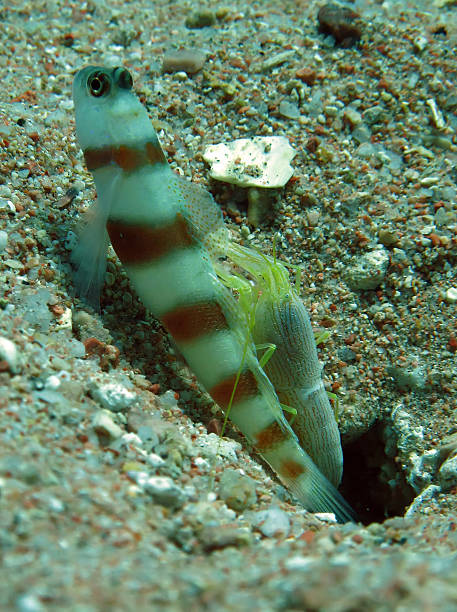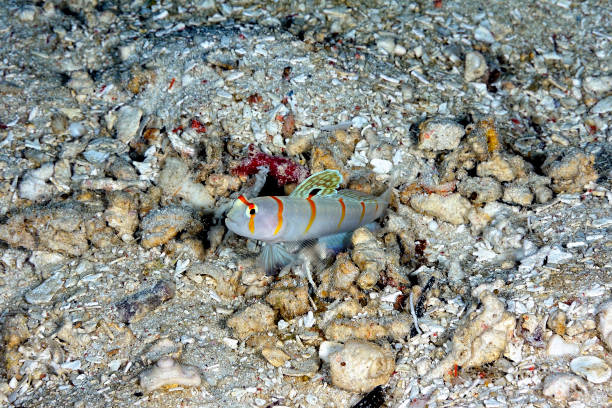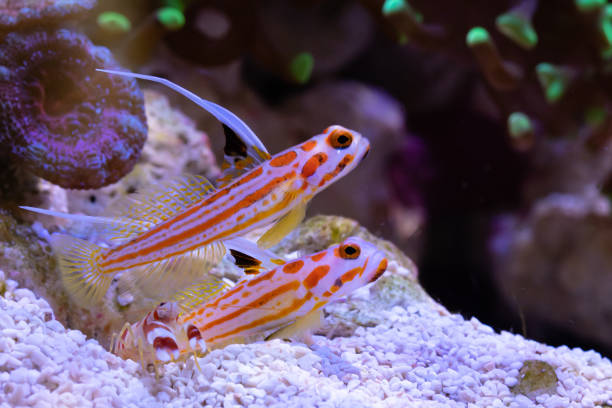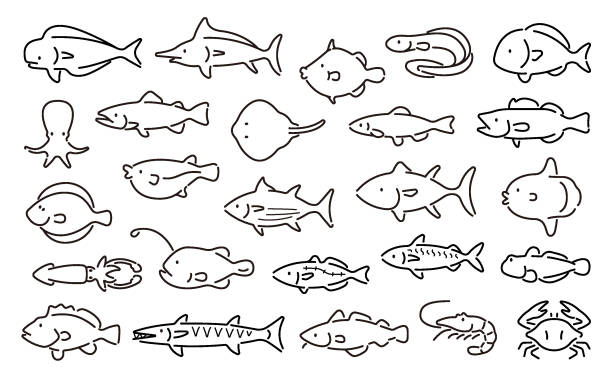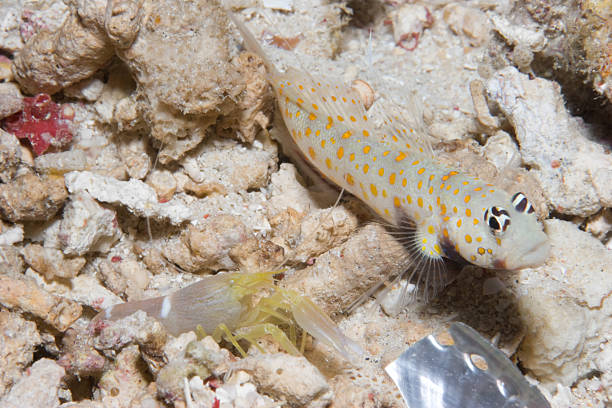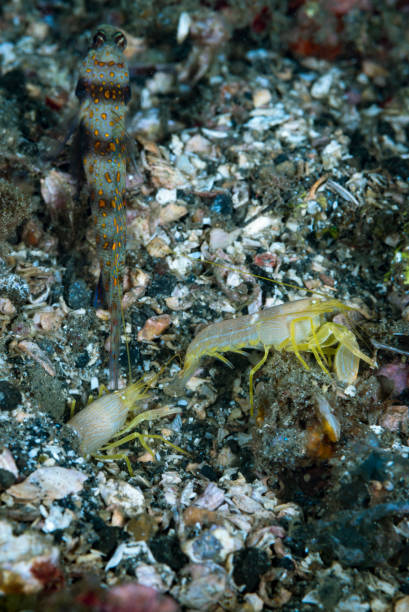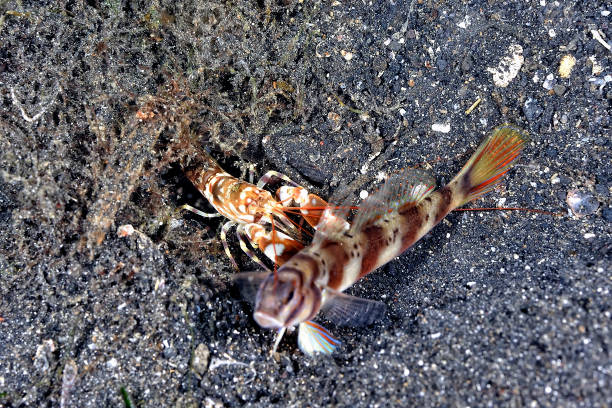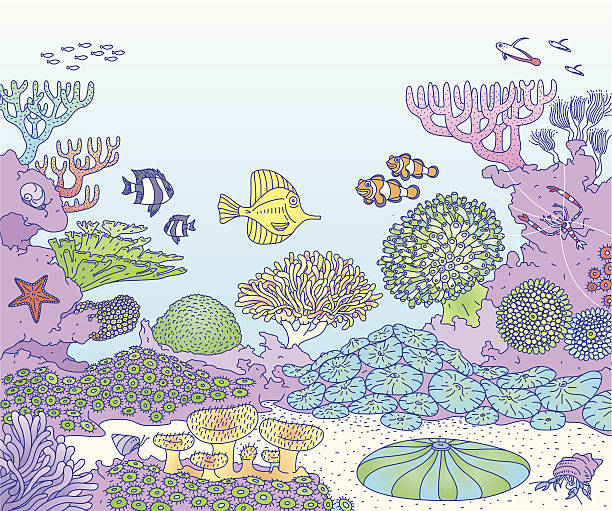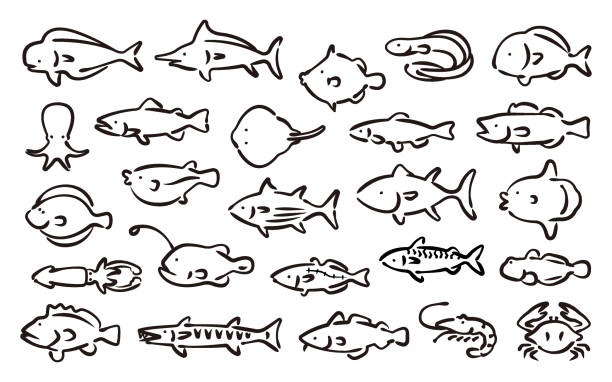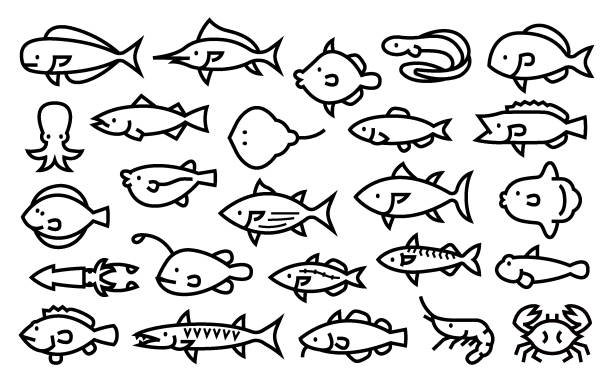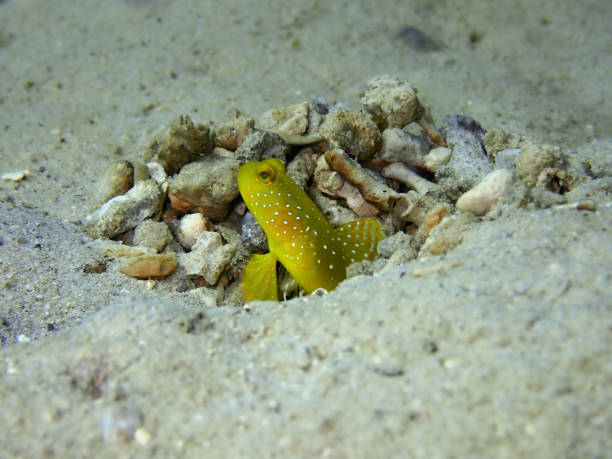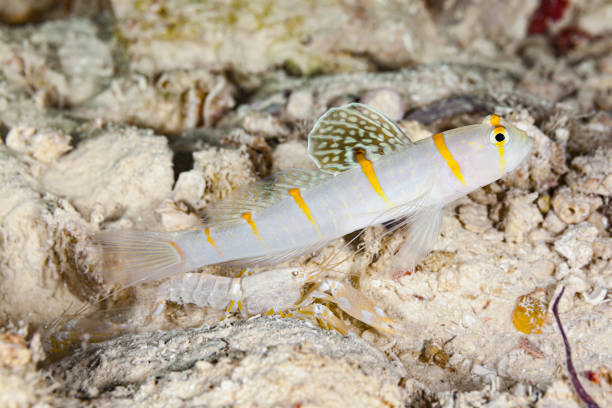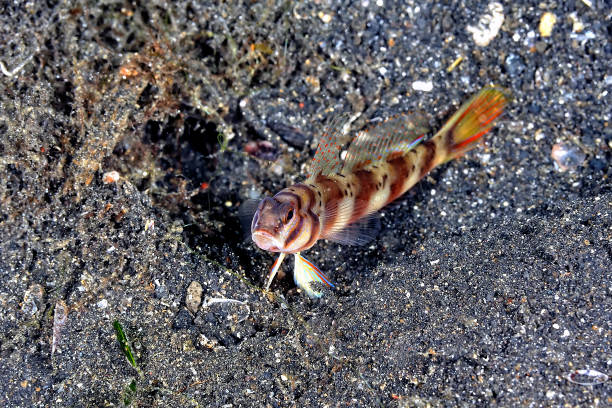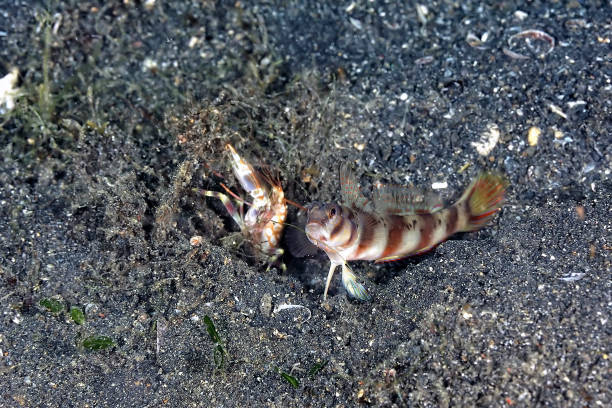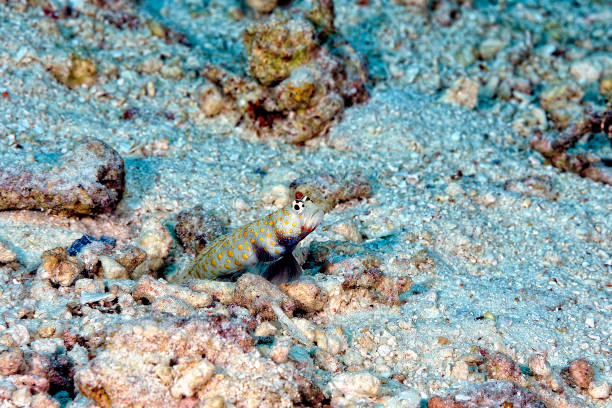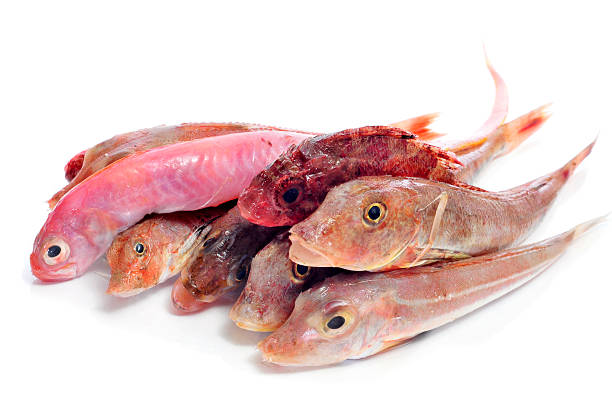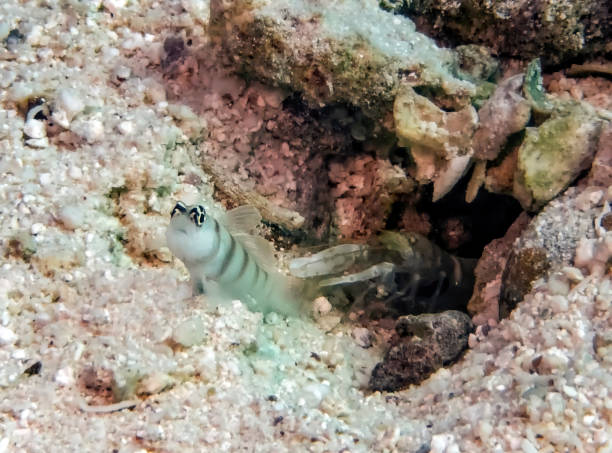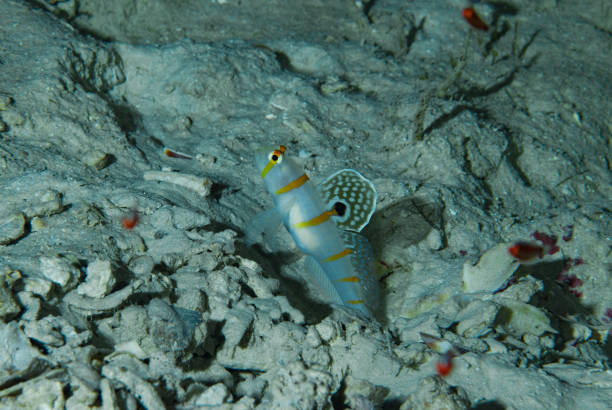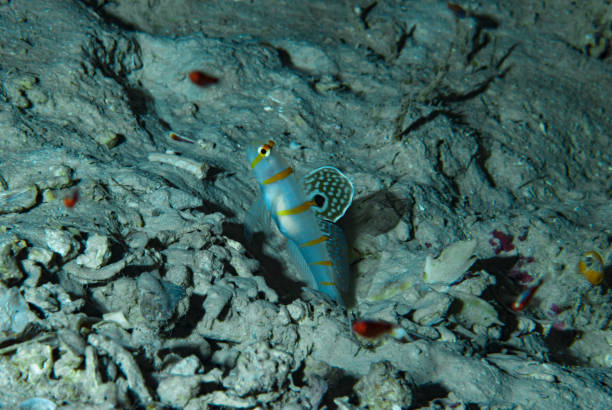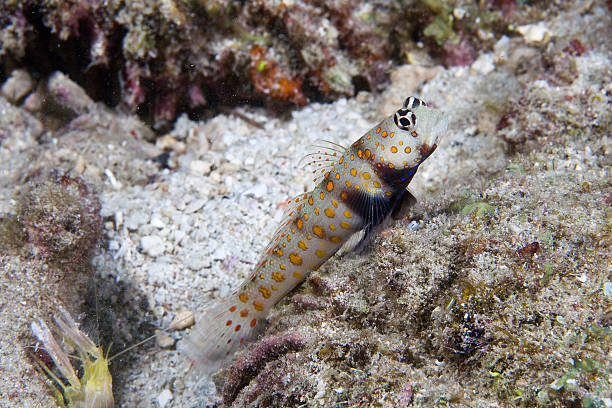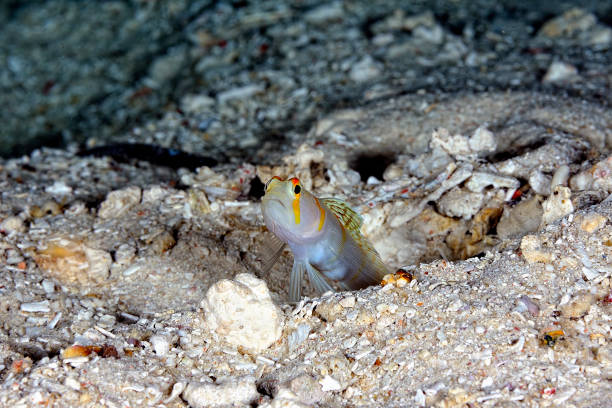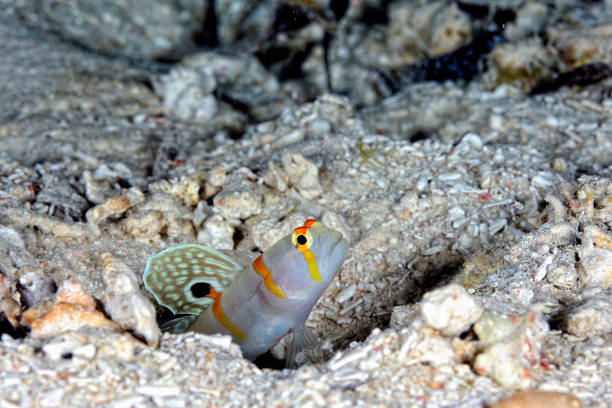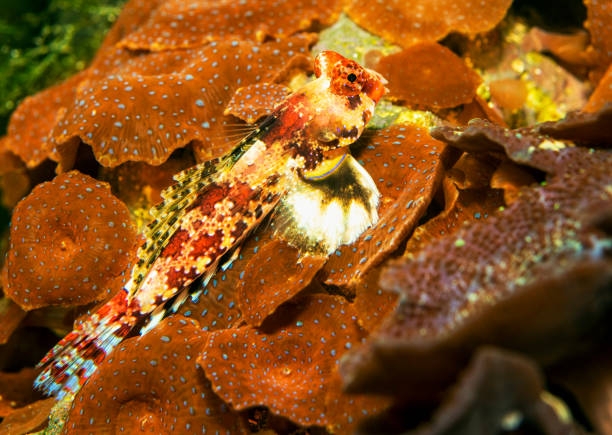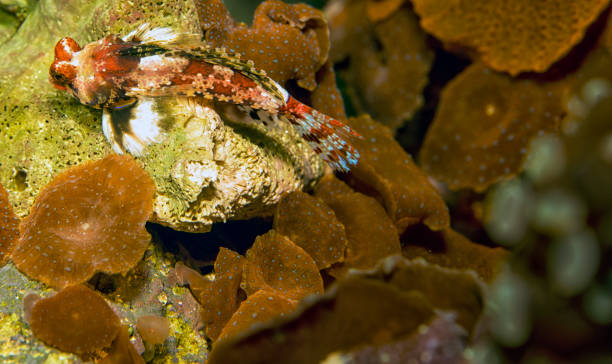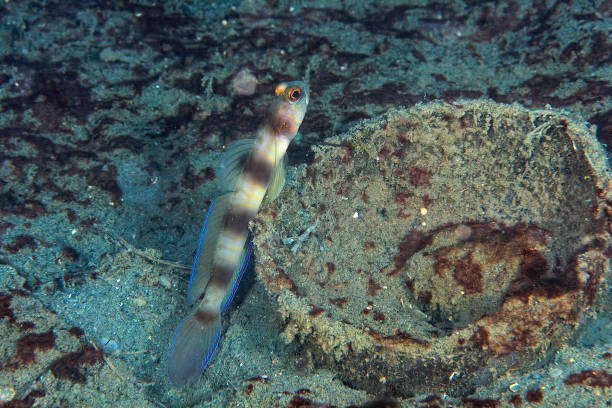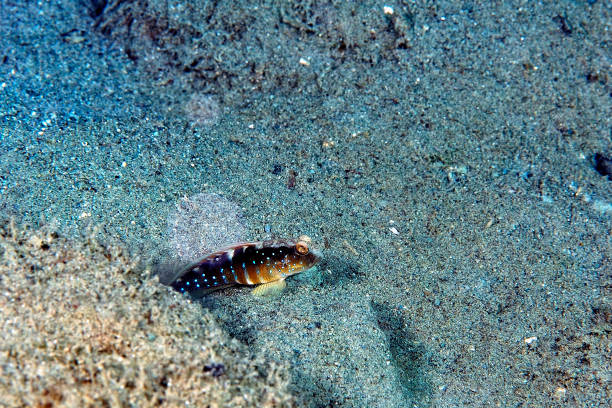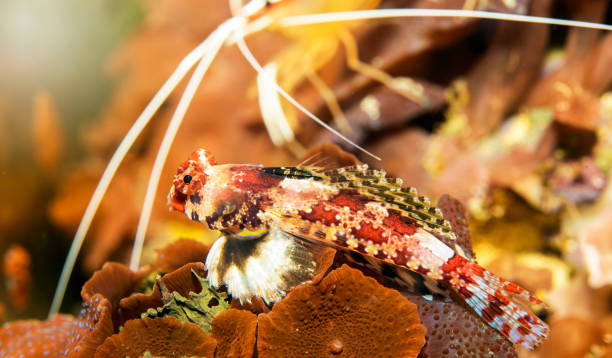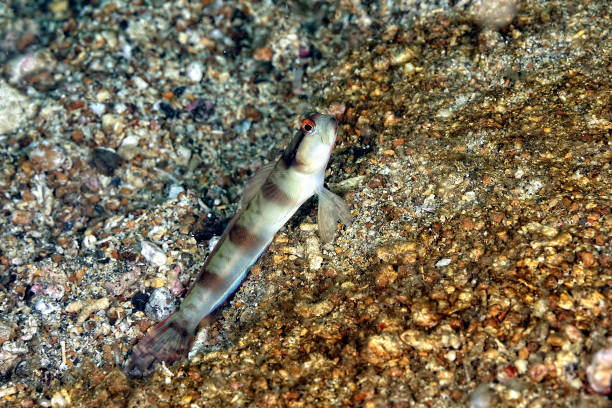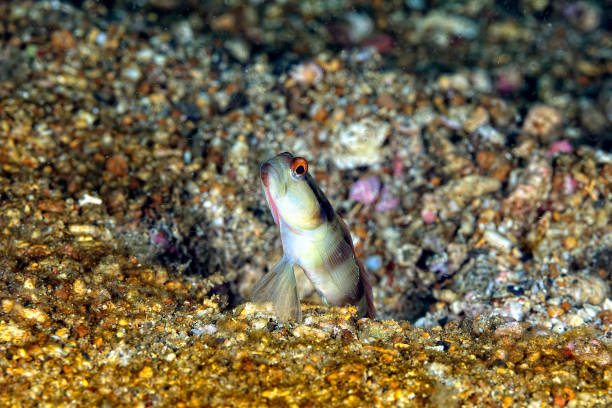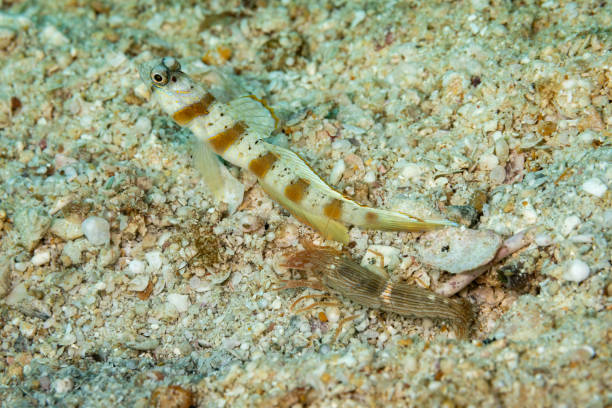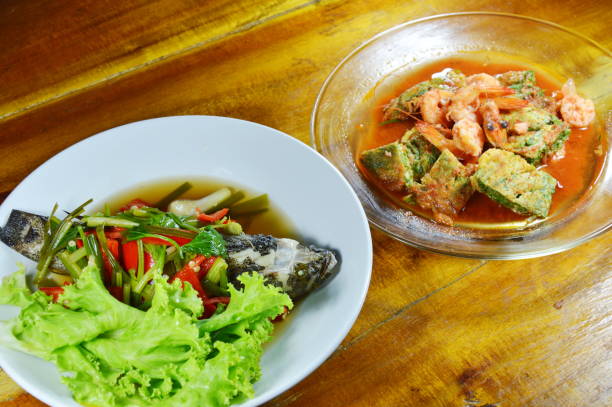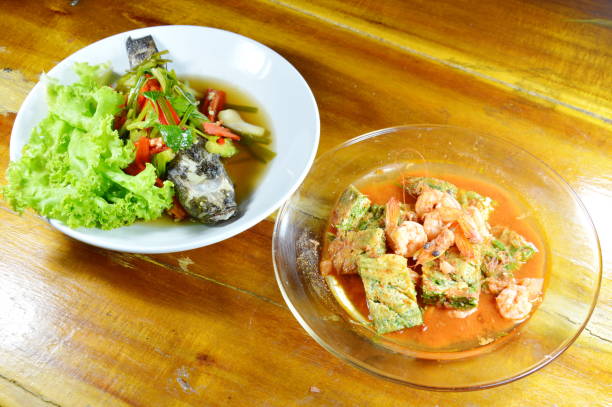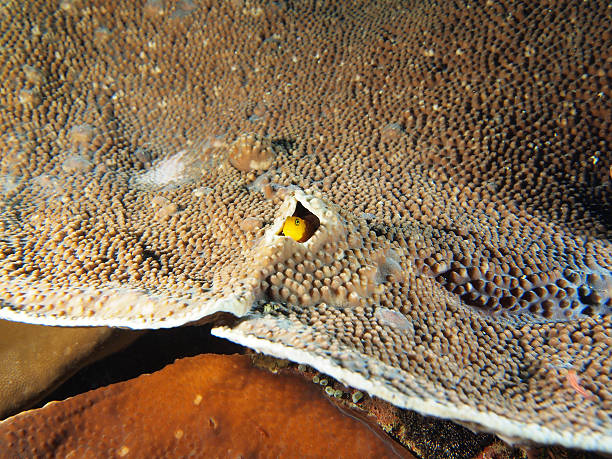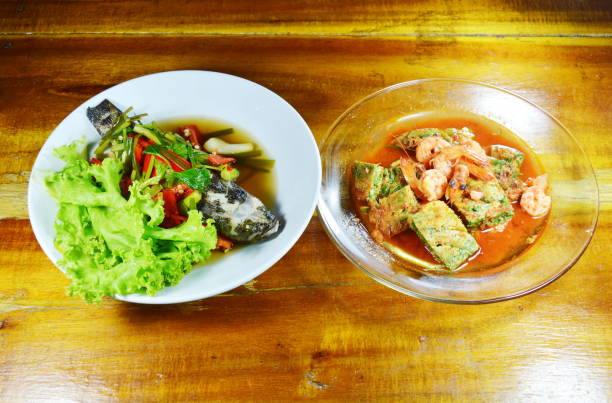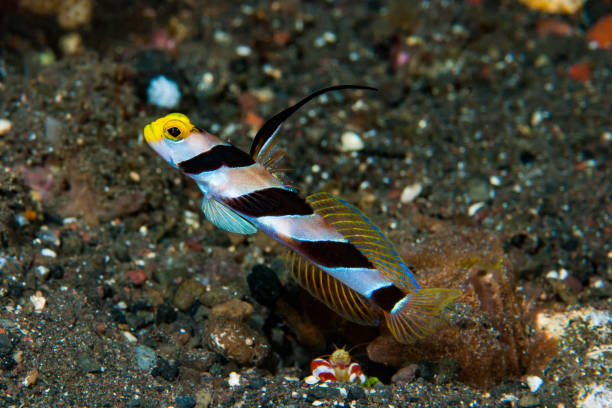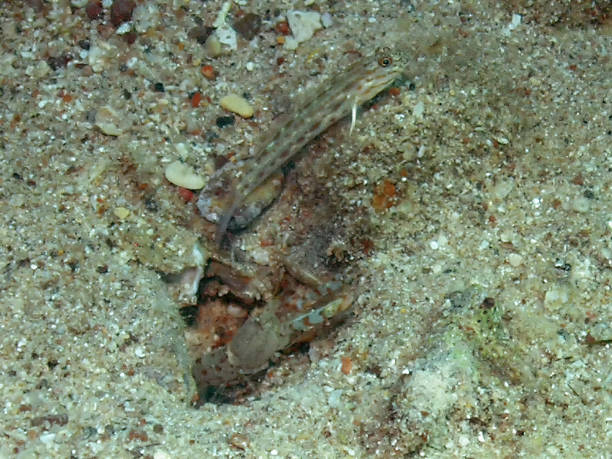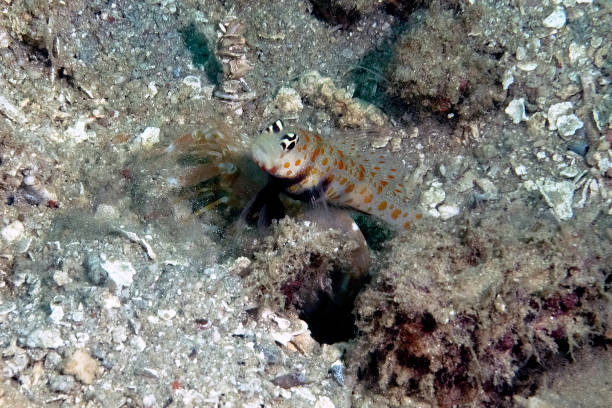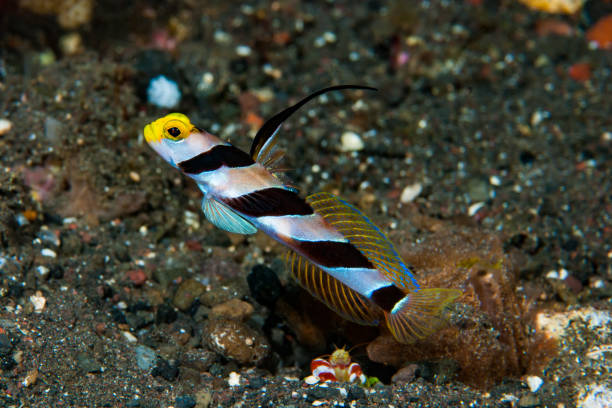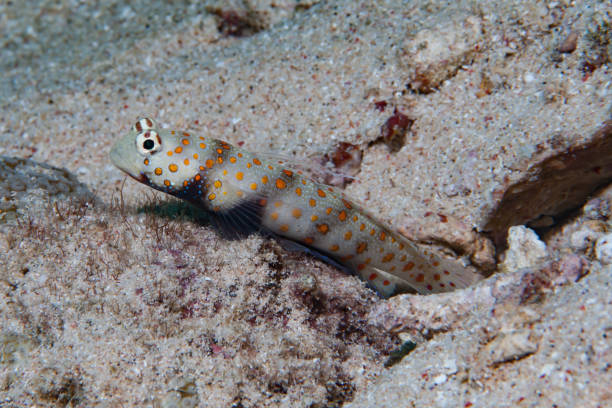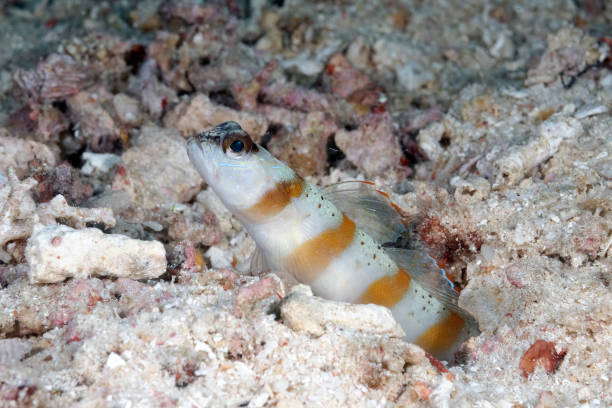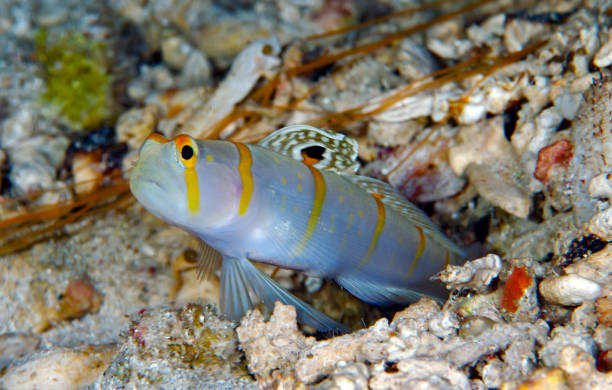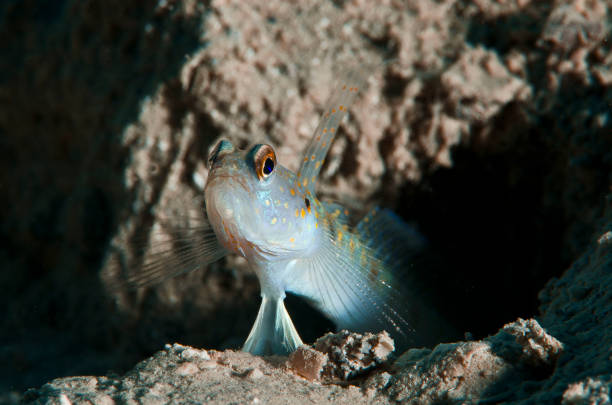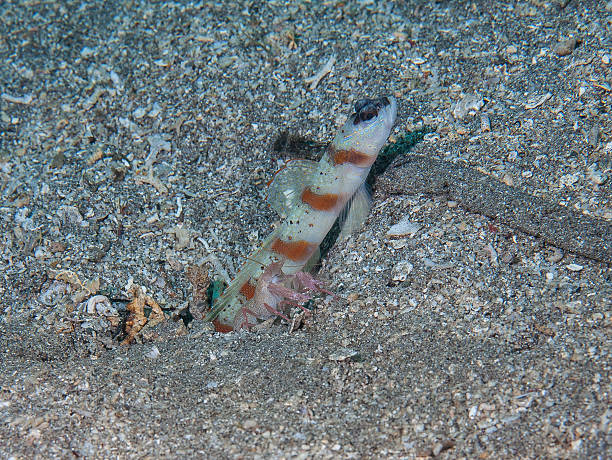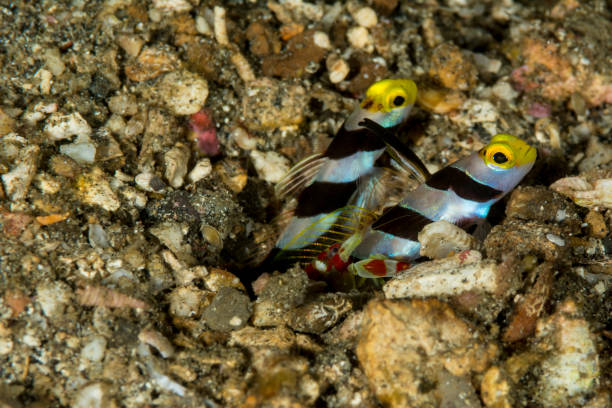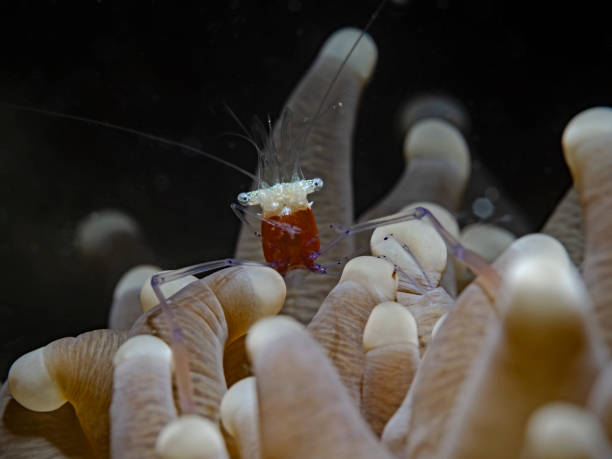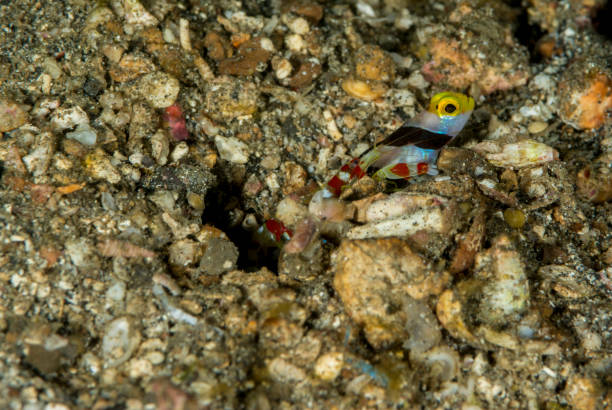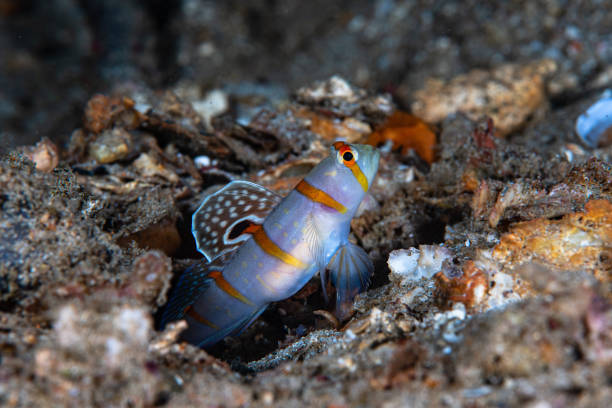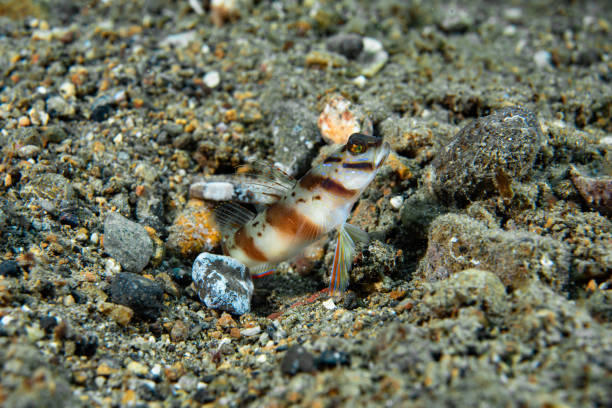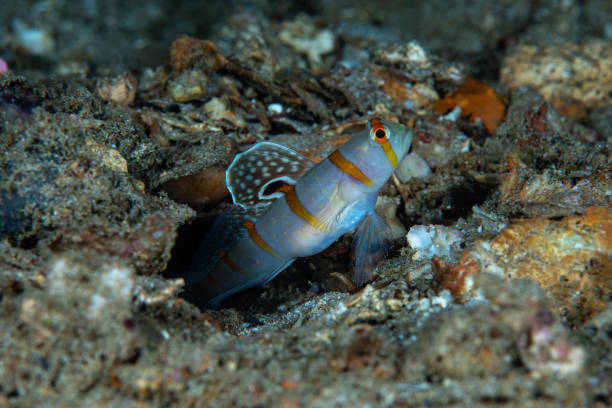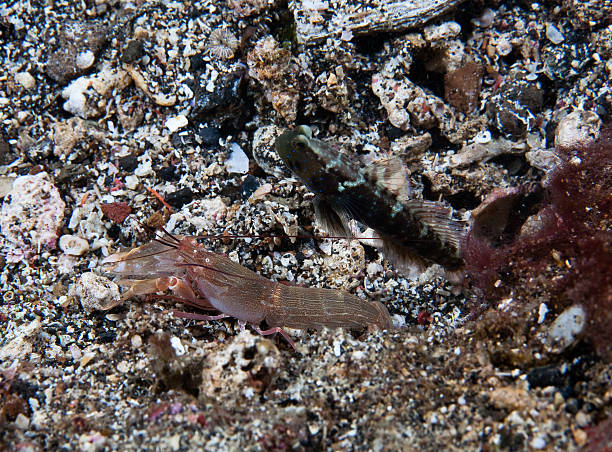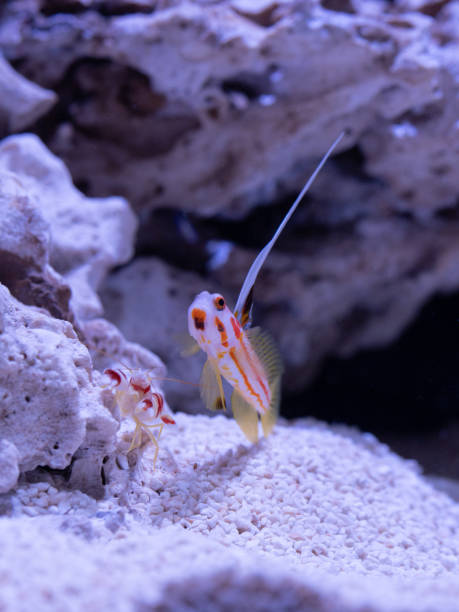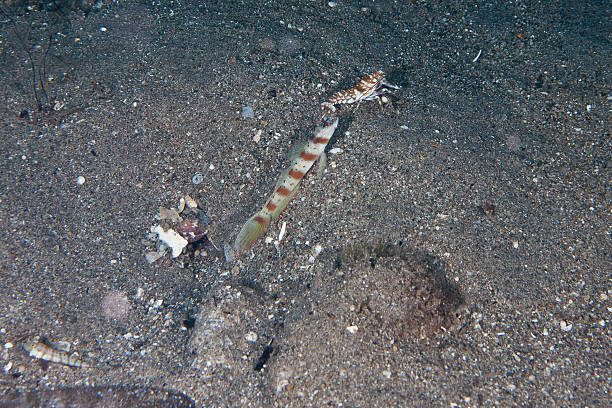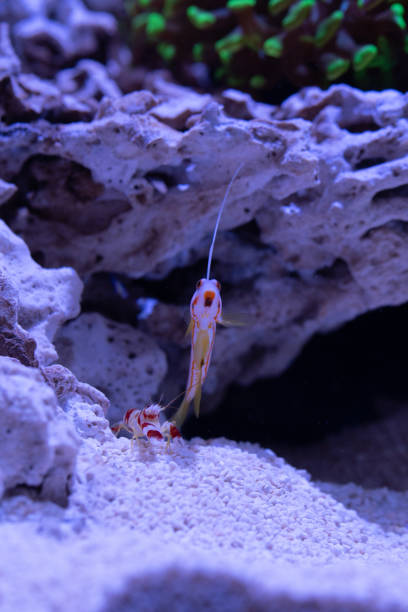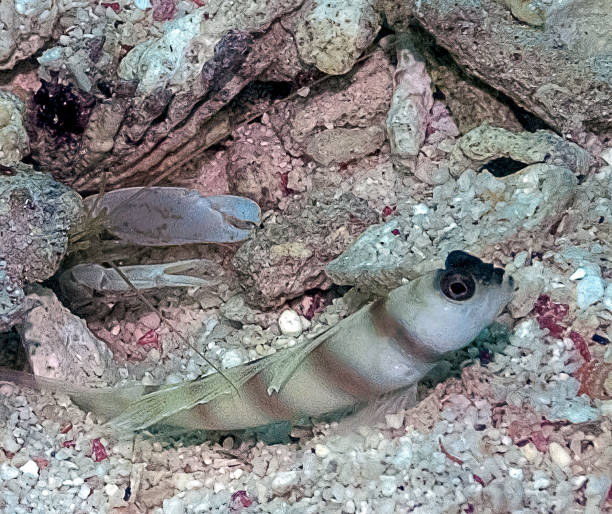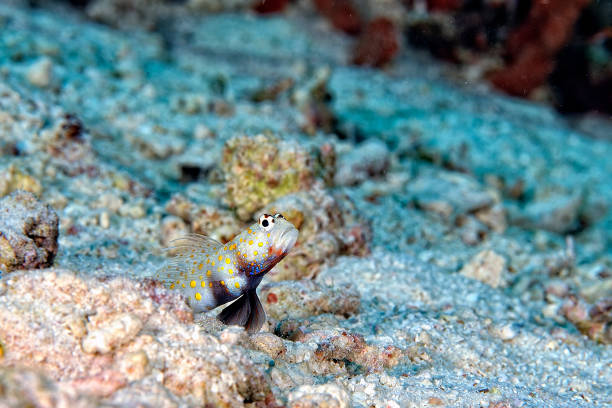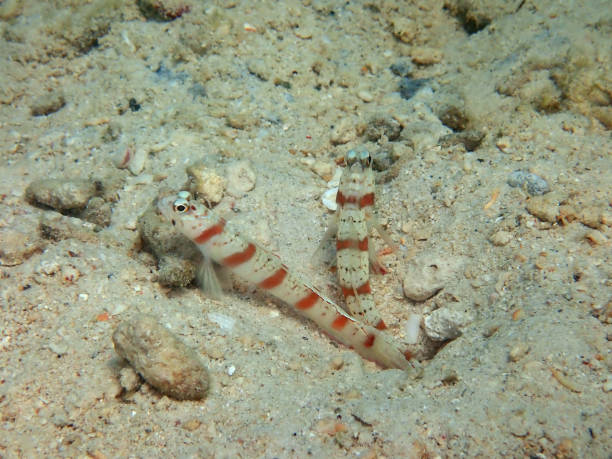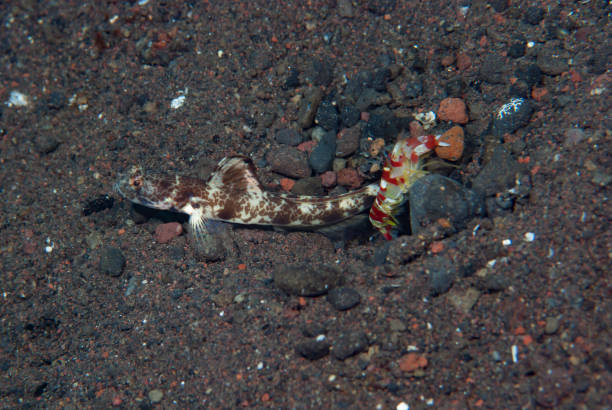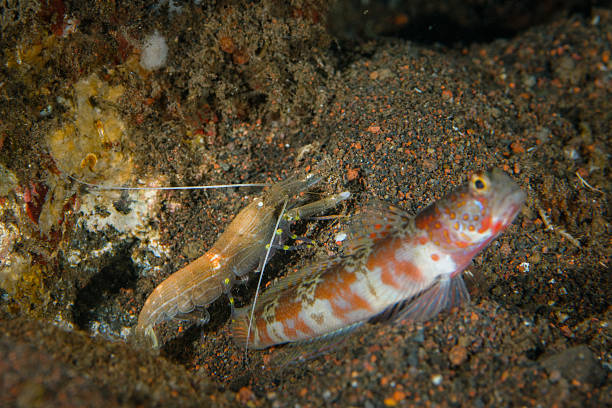
Shrimp Goby Pictures, Images and Stock Photos
Browse 110+ shrimp goby stock photos and images available, or start a new search to explore more stock photos and images.

Goby (Amblyeleotris periophthalma) watching over as the shrimp (Alpheus sp.) brings out sand from their hole. Shrimp touches goby with one antenna.
Steinitz shrimpgoby. Taken at Ras Mohamed is Sharm el Sheikh, Red Sea
Yasha goby (Stonogobiops yasha) pair and pistol shrimp (Alpheidae) looking for food.
This is a set of saltwater fish illustrations. This is a simple set of icons that can be used for website decoration, posters, advertising works and other digital illustrations.
The Spotted Shrimpgoby Amblyeleotris guttata lives in a symbionic partnership with a Snapping Shrimp Alpheus ochrostriatus:
Whide-Barred Shrimpgoby (Amplyeleotris latifasciata) and Snapping (often know as pistol) shrimps (Alpheus sp.). These two species have a symbiotic relationship, sharing the same burrow. The shrimps keep it clean and, being semi blind, trust on the goby’s tail movements as a warning against predators. Underwater macro photography taken in Lembeh, Manado - Indonesia.
An illustration of a reef with all sort of inhabitants. Including:
This is a set of saltwater fish illustrations. This is a simple set of icons that can be used for website decoration, posters, advertising works and other digital illustrations.
This is a set of saltwater fish illustrations. This is a simple set of icons that can be used for website decoration, posters, advertising works and other digital illustrations.
Closeup and macro shot of Yellow Watchman Shrimpgoby or the yellow prawn-goby during leisure dive in Tunku Abdul Rahman Park, Kota Kinabalu, Sabah. Malaysia, Borneo.
Randall's Shrimpgoby Amblyeleotris randalli occurs in the Western Pacific in a depth range from usually 25-50m on patches of carbonate sand of clear water reefs, usually in rubble caves with a Snapping Shrimp, this specimen with two of them, max. length 12cm. Palau, 7°5'12.18" N 134°15'34.77" E at 15m depth, unusually shallow, but in a niche of a steep wall
closeup of some raw fishes on a white background
In the image, a Gold-barred Shrimp Goby (Amblyeleotris randalli) is seen resting at the entrance of its burrow. The fish has a slender body with yellow and black stripes, and its distinctive gold bar gives it its name. The burrow is shared with a snapping shrimp, with whom the fish has a symbiotic relationship. The shrimp provides protection and maintenance of the burrow, while the fish acts as a lookout for potential threats. Other species of fish and invertebrates can be seen in the background, showcasing the diverse ecosystem of the coral reef
In the image, a Gold-barred Shrimp Goby (Amblyeleotris randalli) is seen resting at the entrance of its burrow. The fish has a slender body with yellow and black stripes, and its distinctive gold bar gives it its name. The burrow is shared with a snapping shrimp, with whom the fish has a symbiotic relationship. The shrimp provides protection and maintenance of the burrow, while the fish acts as a lookout for potential threats. Other species of fish and invertebrates can be seen in the background, showcasing the diverse ecosystem of the coral reef
Redmargin Shrimpgoby Amblyeleotris rubrimarginata occurs in the tropical Western Pacific from New Caledonia to the Great Barrier Reef and around New Guinea, Indonesia, Malaysia and the Philippines on sandy bottoms of coastal bays and estuaries in a depth range from 2-20m, max. length 11cm. Alpheus sp. shrimps make a burrow under liverock, which will be shared with a goby typically from the Amblyeleotris genera in a symbiotic relationship. Because these shrimp have poor eye sight, the goby acts as a look out for predators while the shrimp provides a home for the goby; both also benefit in sharing food resources. These shrimps are carnivores. They also act as cleaner shrimp for the goby partner. Triton Bay, West Papua Province, Indonesia, 3°54'41.0503 S 134°7'18.2052 E at 15m depth
steamed goby fish with soy sauce and fried egg stuffed climbing wattle in prawn spicy soup
steamed goby fish with soy sauce topping vegetable and fried egg in shrimp spicy soup
Yellow Watchman Goby or Yellow Watchman Prawn (Cryptocentrus cinctus) stay safe in its table coral home. Ceram sea, Indo-pacific ocean, Indonesia
steamed goby fish with soy sauce topping chili and fried egg in prawn spicy soup
The Black-Rayed Shrimp-goby (Stonogobiops nematodes) is a fascinating fish with a unique color pattern, often seen hovering over its burrow. The fish displays a combination of bright colors, including black, white, yellow, and orange.
The Black-Rayed Shrimp-goby (Stonogobiops nematodes) is a fascinating fish with a unique color pattern, often seen hovering over its burrow. The fish displays a combination of bright colors, including black, white, yellow, and orange.
In the image, a Gold-barred Shrimp Goby (Amblyeleotris randalli) is seen resting at the entrance of its burrow. The fish has a slender body with yellow and black stripes, and its distinctive gold bar gives it its name. The burrow is shared with a snapping shrimp, with whom the fish has a symbiotic relationship. The shrimp provides protection and maintenance of the burrow, while the fish acts as a lookout for potential threats. Other species of fish and invertebrates can be seen in the background, showcasing the diverse ecosystem of the coral reef
A Vanderhorstia mertensi in Kas in Mediterranean
Yellow nose shrimp goby - stonogobiops xanthorhinica with alpheid shrimp
Yellow nose shrimp goby - stonogobiops xanthorhinica with alpheid shrimp
In the image, a Gold-barred Shrimp Goby (Amblyeleotris randalli) is seen resting at the entrance of its burrow. The fish has a slender body with yellow and black stripes, and its distinctive gold bar gives it its name. The burrow is shared with a snapping shrimp, with whom the fish has a symbiotic relationship. The shrimp provides protection and maintenance of the burrow, while the fish acts as a lookout for potential threats. Other species of fish and invertebrates can be seen in the background, showcasing the diverse ecosystem of the coral reef
The Diagonal Shrimp-Goby is a species of marine fish commonly found in sandy bottoms of coral reefs in the tropical and subtropical Indo-Pacific. This species is known for its symbiotic relationship with a pistol shrimp, which shares its burrow with the shrimp-goby. The shrimp-goby will alert the pistol shrimp of potential threats while the pistol shrimp provides protection and maintenance of the shared burrow. The Diagonal Shrimp-Goby has a distinctive diagonal stripe pattern that allows it to blend in with its sandy surroundings and avoid detection by predators. They are also popular in the marine aquarium trade as ornamental fish. Conservation efforts are necessary to ensure the preservation of this species and the overall health of coral reef ecosystems.
In the image, a Gold-barred Shrimp Goby (Amblyeleotris randalli) is seen resting at the entrance of its burrow. The fish has a slender body with yellow and black stripes, and its distinctive gold bar gives it its name. The burrow is shared with a snapping shrimp, with whom the fish has a symbiotic relationship. The shrimp provides protection and maintenance of the burrow, while the fish acts as a lookout for potential threats. Other species of fish and invertebrates can be seen in the background, showcasing the diverse ecosystem of the coral reef
Shrimp goby and partner shrimp
Yasha goby (Stonogobiops yasha) and pistol shrimp (Alpheidae) pair looking for food.
Goby and bulldozer shrimp on sand
Yasha goby (Stonogobiops yasha) and pistol shrimp (Alpheidae) pair looking for food.
Gobiidae is a family of bony fish in the order Gobiiformes, one of the largest fish families comprising more than 2,000 species in more than 200 genera, sometimes referred to as the "true gobies". Most of them are relatively small, typically less than 10 cm in length.
One of the most remarkable aspects of the Shrimpgoby Tomiyamichthys oni is its symbiotic association with a specific species of shrimp. These two organisms engage in a mutually beneficial relationship where the goby provides protection to the shrimp, while the shrimp, in turn, constructs and maintains a burrow that they both share. This remarkable adaptation allows the Shrimpgoby Tomiyamichthys oni to safely inhabit the sandy bottoms of coral reefs and create a harmonious partnership with its shrimp counterpart. It is a testament to the intricate web of relationships found within the diverse marine ecosystems and showcases the fascinating coexistence of species in the underwater realm.
Goby fish and a shrimp live together. Underwater macro world of Tulamben, Bali, Indonesia.
